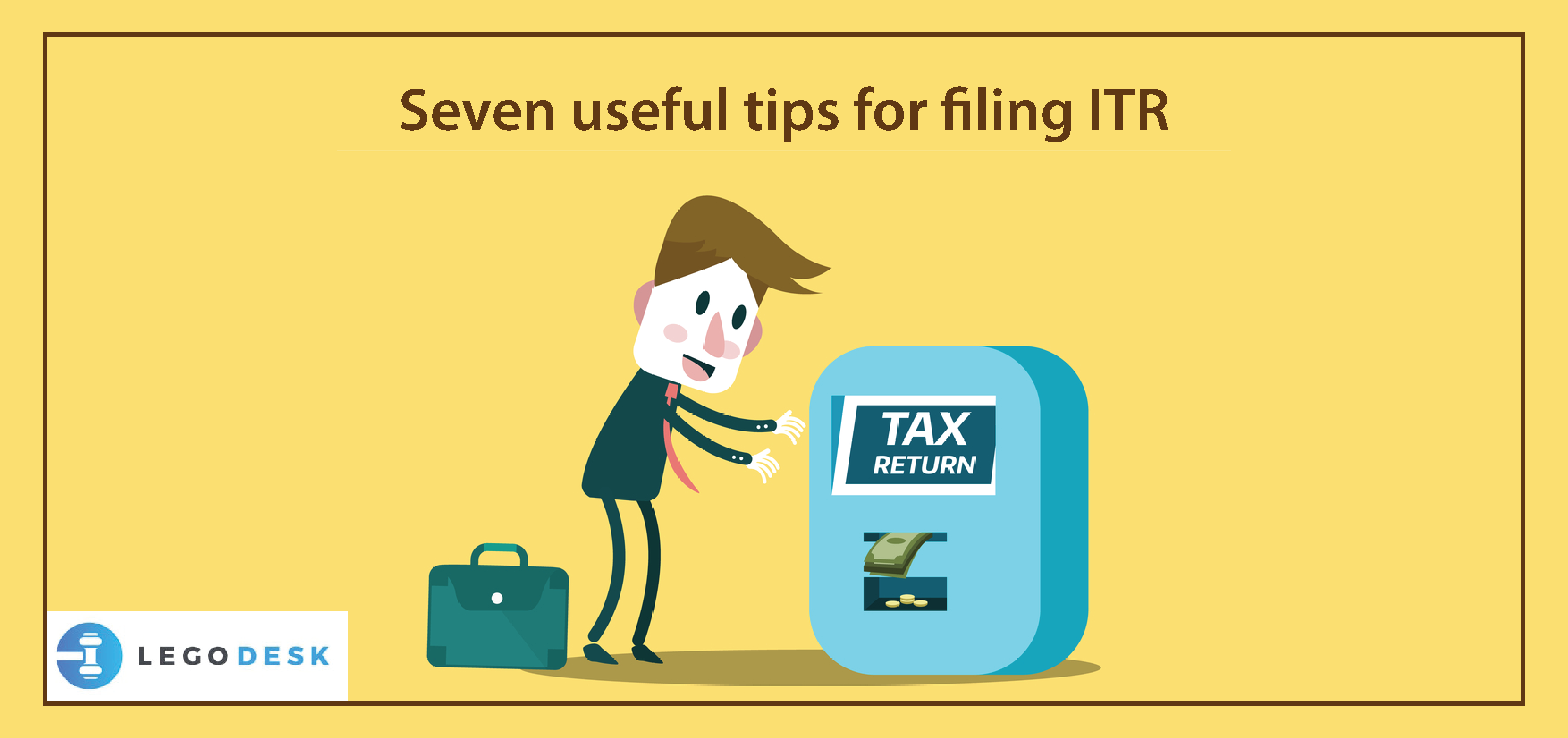All individuals having an annual income of more than Rs 2.5 Lakh and who are under the age of 60 years are required to file an ITR. Filing ITR declares the total income earned during the year by an assessee. An assessee is a person who pays income tax or any other sum of money payable under the Income-tax Act, 1961. The term person includes an Individual, Hindu Undivided Family, a Company, a Firm, Association of Persons, a Local Authority or an Artificial Juridical Person.
Read Also: Deductions Under Section 24 of Income Tax
The process of filing ITR is often considered as complicated and involves filing a number of documents. Many taxpayers mostly end up making many mistakes. This can be a result of a deliberate attempt to evade taxes. However, here are seven useful tips which a taxpayer should keep in mind while filing his returns.
Select the Correct ITR Form
Choosing the correct ITR form can be a bit confusing, but it is important to fill the correct form. The selection of the type of form will be dependent on the nature of income earned and the total income. There are different types of forms available for filing the income tax returns ranging from ITR-1 to ITR-7. For instance, someone having salary income and own one house property must file ITR-1. ITR-3 is usually filed by people who earn income from a business or profession.
However, the government is taking steps to ease the process of filing Income Tax Returns. This was announced recently by Finance Minister Nirmala Sitharaman in Budget 2019. Accordingly, the taxpayers will now download a pre-filled form from the income tax website. Different sources, like the mutual fund houses, banks, registrars, etc. will be used to collect information and be readily available to the taxpayers in the form of a pre-filled form. They will only be required to verify the form and submit the form.
Report All Income Sources
One must report all sources of income while filing tax returns, including exempt incomes such as house rent, allowances, conveyance, etc. Many individuals have a number of income sources other than salaries like interest on a savings account, insurance, fixed deposits, mutual funds, family pensions, and other capital gains. All of these income sources should be disclosed while filing returns. While some of them are tax-free and some are Tax Deductible at Source (TDS), all are to be reported. The TDS deducted can be checked through Form 26 AS later.
Foreign income should also be shown in the ITR forms. This income includes income from foreign assets like bank accounts, shareholdings, or any other asset owned in a foreign country.
Any investment started in the name of the minor is also to be included in the taxable income. In such a case, the income of the minor will be treated or clubbed with the income of the parent at the same rate before computing the net taxable amount.
In the case of change of jobs in a financial year, incomes from both the employers have to be reported at the time of filing ITR. Upon failure to report any such income, will force the Income Tax department to take action against that individual.
Read Also – Presumptive Income under Section 44AD
Reconciliation or verification of TDS in Form 26AS
The next important thing is to verify or check if the tax deducted at source is credited to the PAN. The TDS deducted by the employer reflects in Form 16. This is an important document, especially for the salaried group because it is the sole proof of the taxes paid by an individual. The tax department reconciles the details filled in the returns with the amount appearing in Form 26 AS after the return is filed by the individual.
Form 26 AS is a consolidated statement which reflects the tax deducted on any type of income whether TDS on salary income or TDS on the interest income from investments or deposits etc. and advance tax credit to the PAN.
One should verify the income which reflects in Form 16 with that of the amounts reflecting in Form 26 AS so as to avoid non-reporting or additional reporting of incomes or deductions. In case of any difference, it should be rectified in order to avoid notice from the tax authorities.
Fill in correct Personal Details
Make sure that the personal details such as PAN, address, e-mail address, name, aadhaar number, phone number, date of birth, etc. entered in filing the ITR are correct. Make sure that the bank details mentioned are also correct in order to ensure smooth transactions in case of claiming a refund.
Disclose all asset if earning crosses the limit of Rs. 50 Lakh.
This applies to taxpayers whose taxable income in the relevant financial year exceeds Rs 50 Lakh. These taxpayers should give details of assets and liabilities held by them on the 31st March of that year. Assets such as land and building are to be listed under immovable assets. Movable assets include cash in hand, jewelry, vehicles, shares, security, and also loans and advances are given.
Deduction Proofs
Keep proofs of all payment receipts such as insurance receipts, tuition fees, medical receipts, any rent paid, etc. These can be shown as proofs to the tax authorities in case there is any discrepancy in the ITR. Hence, it is advisable to maintain a proper document or file to keep all payment receipts or deductions claimed.
E- Verification
Once the income tax details are filled and confirmed, the next step is to proceed with filing the returns. For an electronically filed return, its important to check/verify the returns with Aadhaar/Net banking option within 120 days. If it is not feasible, then it is necessary to post signed ITR-V acknowledgment within 120 days. Upon failure to do this, the tax return would be considered as invalid.


